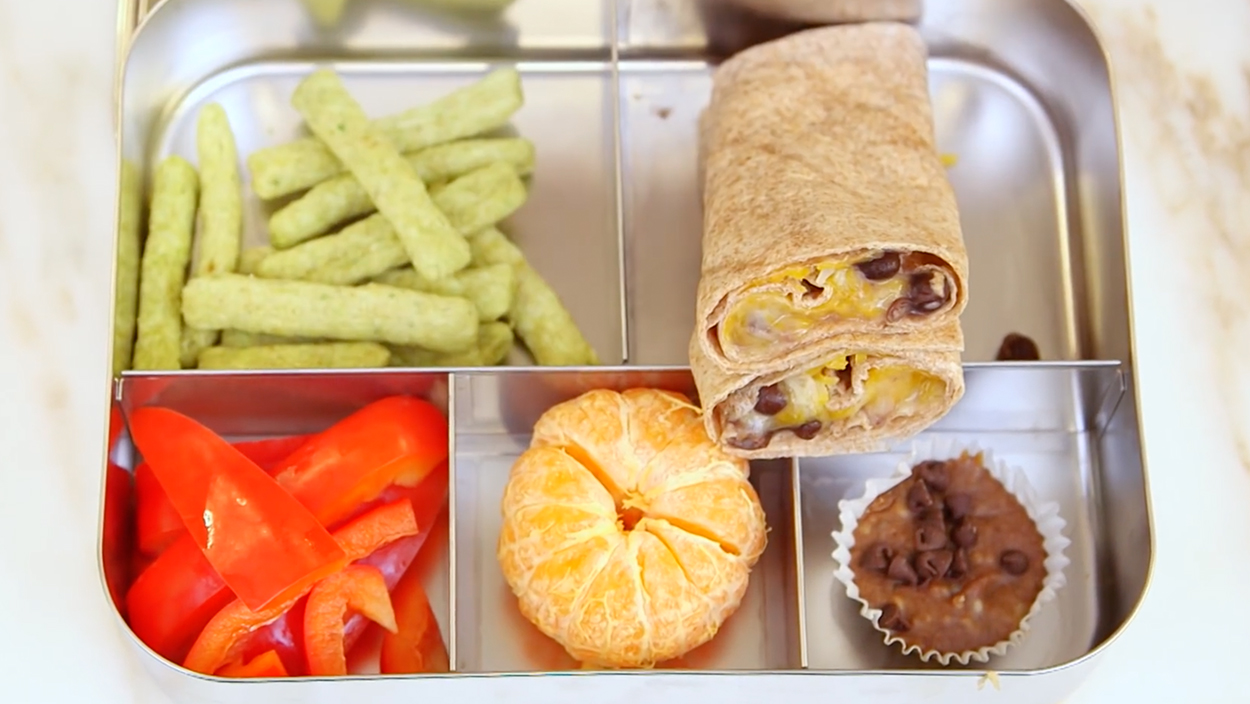

I don’t remember much about my time in elementary school. On my first day of Kindergarten, I know I wore a red-and white striped jumper with a whale appliqué and a collared white shirt. I know my best friend’s name was Kaitlynn — she had long, brown hair and deep, brown eyes. The boy I liked was Chris, and, once, I tried to steal a kiss by chasing him around the gym. What I do remember quite well, though, is that among all the things I toted around, the most prized was my lunch box: a plastic, hard-shelled, baby blue Wizard of Oz number with a matching Thermos.
The contents of said box were just as enticing as its exterior. While most kids were eating cheese sandwiches and PB&Js, I was chowing down on Waldorf salad, chicken salad, and homemade “Lunchables,” but that’s because my mother — like many ‘50s babes — took her stay-at-home role very seriously. We ate a home-cooked meal every night.
But my own daughter? For lunch, she gets whatever she can make… or she eats school lunch. No frills. No fuss. End of discussion.
Of course, the former is preferable. She is in first grade, and, last year, when I packed her lunches, her sandwiches were barely touched and the waste annoyed me. I was throwing away money, food, and my time, so I told her to take over. If she wanted a homemade meal, she could make it on her own.
Harsh? Maybe. After all, she is young… and busy. Between school, homework, and competitive dance, my six-year-old has a full schedule. But I didn’t force this chore upon her to leave her in a lurch; I did it in hopes of empowering her.
You see, she doesn’t get free reign of the kitchen. I keep an eye on the process to ensure she isn’t just tossing a handful of Oreos into a plastic bag. If food needs to be heated, I do it for her, of course. I make sure there’s always sliced chicken to grab — and sides of fruit, mashed potatoes, vegetables and rice — but otherwise I’m pretty hands off because I want to teach her to be reliable and responsible. I want her to understand the work that goes into creating a meal, and be able to feed herself, and I want her to feel a sense of ownership. I want her to respect and appreciate food. As someone who has recovered from an eating disorder, that one is particularly important to me.
But the most surprising takeaway of this experiment has been the way it’s forced me to step back and relinquish control — which is very difficult for me as I’m a Type A personality through and through. My friends affectionately refer to me as “cruise director Kim” because I always need a schedule and plan. My day is outlined within minutes of my waking. My tasks are logged in my iPhone, and any change causes me anxiety.
So how did I pull this off? Scratch that. How did we — my daughter and I — do this? Well, we started small. These are some of the things that worked well for us:
- Give your child a “formula” for what goes into a lunch. The building blocks. I’ve taught my daughter to pack a protein, a carb, a fruit — or vegetable — beverage and (of course) a snack.
- Let them pick out a lunchbox and Thermos they’re excited about— or doodle designs on a paper bag.
- Shop for groceries together and let your child select the various components of the meal. On our first trip, my daughter snagged salami, apples, raspberries, pretzels, and a box of Lay’s assorted chips.
- If you’re doing any cooking, do it on Sundays to alleviate the Monday morning rush, and have your child help.
- Let go of expectations. Your kid will make a mess, and their lunch may be one too. If they want ketchup with their grapes, so be it. Try to be as hands-off as possible and roll with it. This is how they learn.
Of course, not everyone agreed with my decision to let my daughter be in charge of her own lunches. Even my husband recoiled at first; he felt she was way too young to take that on. I don’t know if any of her peers pack their own lunches, but truthfully, I don’t care. I felt it was the right decision for us, and so we tried it out. Turns out, this arrangement works for us.
Things aren’t perfect. Some days her lunches are questionable. Many days her meals are entirely white. Other days she is just too tired — or too frustrated or annoyed — to make a meal. By Wednesday of each week she is usually buying school lunches. But I am trying. She is trying, and in the end, we will both be better for it.







